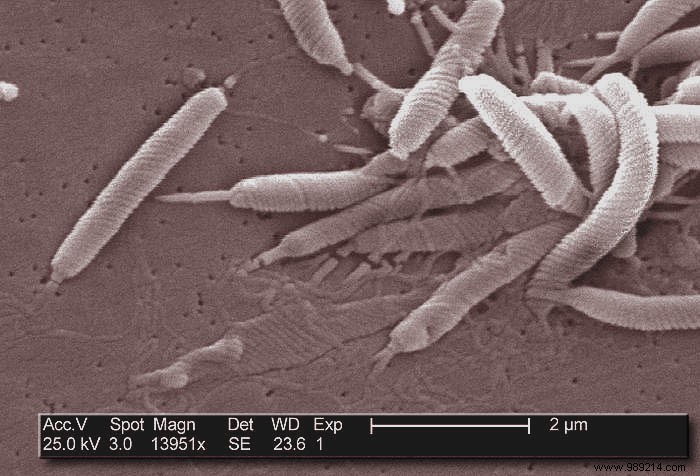In Europe, strains of bacteria Helicobacter pylori have doubled their rate of antibiotic resistance over the past 20 years. And of course, that's not good news.
Its name may not mean anything to you, but Helicobacter pylori is a fairly common bacterium found in 50% of humans. Although many will never notice its presence, you should know that this bacteriuminfects the gastric mucosa tens of millions of people around the world each year. It thus promotes the development of ulcers and stomach cancer.
To combat it, doctors prescribe antibiotics and drugs aimed at reducing the production of stomach acid. These treatments were effective, but over time, Helicobacter pylori got used to it. And she seems for a few years to develop a resistance.
This is indeed the conclusion of a recent study presented a few days ago at the annual conference of the United European Gastroenterology.
For this work, Francis Megraud and his team, from the University of Bordeaux, compared more than 1,200 bacteria samples taken from patients by doctors from 18 European countries between 1998 and 2018. The purpose of this research was to monitor the evolution of resistance of this bacterium to three commonly used antibiotics:clarithromycin, levofloxacin and metronidazole.
Overall, researchers found that 9.9% of samples taken in 1998 showed resistance to treatments. In 2018, 20 years later, more than 21% samples were resistant. Italy and Croatia are the two most affected countries. With more than a third of the strains of H. pylori resistant to antibiotics.

“With this antibiotic resistance growing at an alarming rate of almost 1% per year, treatment options for H. pylori will gradually become limited and ineffective if new strategies are not developed , warns the researcher. The reduced effectiveness of current treatments could therefore maintain the high incidence rates of gastric cancer and other conditions such as peptic ulcer disease ” .
It should also be noted that Denmark and Norway, for their part, presented an exceptionally low rate of resistance to clarithromycin. This could be explained by the fact that these two countries have long had policies discouraging the unnecessary use of antibiotics. Especially in farm animals. They should therefore be the examples to follow.
Related Articles: